The Cisco 350-401 ENCOR exam, formally known as Implementing and Operating Cisco Enterprise Network Core Technologies, represents a pivotal milestone in the career of any network professional. As the mandatory core examination for the highly respected Cisco Certified Network Professional (CCNP) Enterprise certification, it also serves as the qualifying written exam for the elite CCIE Enterprise Infrastructure and CCIE Enterprise Wireless tracks.1 This exam validates the comprehensive knowledge and practical skills required to configure, troubleshoot, and manage complex enterprise wired and wireless networks. For candidates preparing to undertake this rigorous assessment, one of the most immediate and practical questions is understanding the exam’s structure, beginning with the total number of questions they will face.
The Cisco 350-401 ENCOR exam officially contains between 90 and 110 questions.3 This range is the standard guideline provided by Cisco for its professional-level certifications and serves as a baseline for candidates to set their expectations regarding the exam’s length and pacing.
While the official range of 90 to 110 questions provides a crucial starting point, it does not tell the whole story. The true nature of the 350-401 ENCOR exam is far more dynamic and complex than a simple question count suggests. The actual number of items a candidate encounters can vary based on the specific composition of their unique exam instance, particularly concerning the inclusion of performance-based lab simulations. Therefore, a deeper understanding of the exam’s intricate format, diverse question types, weighted topic domains, and recent structural changes is essential for developing an effective study strategy and achieving success.
Blog Claim: Success on the 350-401 ENCOR exam depends less on the precise number of questions and more on mastering the diverse question formats, especially the hands-on labs, and aligning one’s study plan with the weighted distribution of its core technical domains.
Table of Contents
What Is the Exact Format and Duration of the 350-401 Exam?
Before analyzing the specific types of questions, it is critical for candidates to understand the fundamental parameters that define the entire examination experience. These core constraints—the allocated time, the required passing score, and the financial investment—establish the high-stakes environment in which a candidate must perform. These metrics are the fixed rules of engagement and provide the necessary context for developing a sound time management strategy, which is a skill in itself that the exam implicitly tests.
The Cisco 350-401 ENCOR exam is a 120-minute test that costs $400 USD, with a required passing score of approximately 825 out of 1000.4
The structure of the ENCOR exam is meticulously designed to assess a broad spectrum of knowledge and skills under significant time pressure. The key logistical details are consistent across numerous official and authoritative sources, providing candidates with a clear and reliable framework for their preparation. The exam duration is firmly established at 120 minutes, or two hours.3 The cost is set at $400 USD, a standard fee for Cisco’s professional-level certification exams that underscores the value and seriousness of the credential.1 To pass, candidates must achieve a score of 825 on a scale of 300 to 1000, which translates to an approximate success rate of 82.5% on the scored portion of the exam.4 This high threshold leaves little room for error and demands a thorough command of the subject matter. These foundational details are summarized below for quick reference.
Table 1: Cisco 350-401 ENCOR Exam at a Glance
| Metric | Detail |
| Exam Code | 350-401 ENCOR |
| Full Title | Implementing and Operating Cisco Enterprise Network Core Technologies |
| Duration | 120 Minutes |
| Number of Questions | 90–110 (Variable) |
| Passing Score | Approx. 825 / 1000 |
| Cost (USD) | $400 |
A surface-level analysis of these metrics might lead to a simple calculation: with 120 minutes for up to 110 questions, a candidate has just over one minute per question. However, this calculation is profoundly misleading and fails to account for the exam’s complex composition. The inclusion of performance-based lab simulations—which require hands-on configuration, verification, and troubleshooting in a virtual environment—radically alters the time management equation.9 These lab items are inherently more time-consuming than standard multiple-choice questions, often requiring several minutes each to read the scenario, analyze the topology, execute commands, and verify the outcome. Consequently, the exam is not a uniform series of rapid-fire questions but a blended assessment that tests both quick recall and deliberate, methodical problem-solving. This structure creates a high-pressure environment designed to evaluate not only a candidate’s technical knowledge but also their efficiency, accuracy, and ability to perform under pressure—all critical attributes for a senior network engineer responsible for live enterprise networks. The high passing score, combined with this intense time pressure, means that an effective and disciplined time management strategy is not just beneficial; it is a prerequisite for success.
What Types of Questions Should You Expect on the ENCOR Exam?
The 350-401 ENCOR exam is engineered to be a comprehensive assessment that moves far beyond simple rote memorization. It is designed to validate a candidate’s ability to apply theoretical knowledge to practical, real-world scenarios. To achieve this, Cisco employs a variety of question formats, each tailored to evaluate different aspects of a network professional’s skill set, from conceptual understanding to hands-on implementation and troubleshooting proficiency.
The ENCOR exam features a mix of question types, including multiple-choice (single and multiple answer), drag-and-drop, and critically, performance-based lab simulations that require hands-on configuration and troubleshooting.8
A detailed examination of the question formats reveals a multi-faceted testing methodology. The most common formats include:
- Multiple-Choice Questions: These questions form the bulk of the exam and can have either a single correct answer or multiple correct answers (often indicated by “choose two” or “choose three”). They test a candidate’s knowledge of facts, concepts, definitions, and the differences between various technologies or protocols.11
- Drag-and-Drop Questions: This interactive format requires candidates to match items from one column to another or place steps of a process in the correct order. It is an effective way to test understanding of procedural workflows, component relationships, or classification of concepts.11
- Performance-Based Labs (Simulations): These are the most challenging and practical components of the exam. Candidates are presented with a virtual network topology and a set of tasks to complete within a simulated command-line interface (CLI) or graphical user interface (GUI).1 These tasks are not theoretical; they require actual configuration, verification, and troubleshooting of network devices. Forum discussions among test-takers indicate that labs can cover a wide range of topics, such as configuring Virtual Routing and Forwarding (VRF), setting up IPsec tunnels, implementing First Hop Redundancy Protocols (FHRP) like HSRP or VRRP, or troubleshooting OSPF adjacencies.13
In a significant update to the exam’s structure, Cisco has revised the format to group all performance-based lab questions at the very beginning of the test.9 Candidates now face the most intensive, hands-on tasks during the first hour, followed by the multiple-choice and drag-and-drop questions in the second hour. This change was a direct response to candidate feedback, which indicated that switching between the deep focus required for labs and the rapid-fire nature of multiple-choice questions was cognitively taxing and detrimental to time management.9 By front-loading the labs, Cisco aims to create a smoother exam experience, allowing candidates to tackle the most complex problems while their focus is at its peak.
This structural decision, however, carries a deeper strategic purpose. By placing the practical, hands-on labs first, the exam effectively creates a competency gateway. It immediately filters for candidates who possess genuine, applicable skills versus those who have relied on memorization-based study aids or illicit “brain dumps,” which are notoriously ineffective for preparing for practical simulations.9 A candidate lacking true hands-on experience will likely struggle immensely in the first hour, making it nearly impossible to recover and pass, even if they have memorized the answers to theoretical questions. This “labs-first” approach is a deliberate mechanism to weed out “paper certifications” and uphold the integrity and value of the CCNP credential. This has a profound impact on how one should prepare. Study plans must be lab-centric from the outset, prioritizing hands-on practice with simulators like Boson NetSim, GNS3, or Cisco Modeling Labs. The exam’s structure sends a clear message: it is not enough to know
about enterprise networking; a certified professional must be able to do it.
How Does the Number of Questions Vary and Why?
One of the most common points of confusion for ENCOR candidates is the apparent discrepancy between the officially stated question range and the actual number of questions reported by those who have taken the exam. While Cisco’s documentation specifies a range of 90 to 110 questions, numerous test-takers have shared experiences of receiving a significantly lower total count. This variance is not an error or a system glitch; it is a deliberate and sophisticated feature of the exam’s adaptive design.
The total number of questions on the 350-401 ENCOR exam is dynamic; if a candidate receives a higher number of time-intensive lab simulations, the total question count will be proportionally reduced to maintain a fair and consistent exam duration.17
The official guideline from Cisco clearly states that the exam will contain between 90 and 110 questions.4 However, real-world candidate experiences often paint a different picture. For instance, a post on the Cisco Learning Network detailed an exam instance that consisted of only 58 questions in total.17 The crucial piece of context, however, was that this particular exam included six complex lab assignments. Other forum discussions corroborate this, suggesting that receiving between four and six labs is a common experience.13 Cisco itself acknowledges this variability, explaining that the final question count is dependent on the inclusion of performance-based items.17
This dynamic structure reveals a sophisticated psychometric balancing act designed to ensure fairness and consistency across all exam instances. Each question type carries a different weight in terms of cognitive load and the time required for a proficient candidate to provide a correct answer. A multiple-choice question might be answerable in under a minute, whereas a multi-part lab simulation could reasonably take 10 to 15 minutes to complete. Cisco’s testing engine does not simply generate a random number of questions. Instead, it algorithmically constructs each exam to meet a pre-determined overall difficulty level and to be completable within the strict 120-minute time limit.
There is a clear inverse relationship at play: the more time-consuming lab simulations included in an exam, the fewer multiple-choice questions will be present. This ensures that every candidate, regardless of the specific mix of questions they receive, faces a test of equivalent challenge and is allotted a fair amount of time. This design has significant implications for preparation. It means that candidates cannot and should not base their study strategy on an expected number of questions or labs. The exam is intentionally unpredictable in its composition. The only viable approach is to develop a robust and holistic understanding of all topics in the exam blueprint, with a strong emphasis on the hands-on skills needed to tackle any number of lab scenarios. Attempting to “game” the question count is a futile exercise; preparation must be comprehensive enough to handle any combination the testing algorithm presents.
What Core Topics Are Covered and How Are They Weighted?
While understanding the exam’s format, duration, and question types is crucial for logistical preparation, the ultimate key to success lies in mastering its content. The single most important document for any 350-401 ENCOR candidate is the official exam blueprint provided by Cisco. This blueprint meticulously details the technical domains covered on the exam and, critically, assigns a percentage weight to each one, allowing candidates to strategically allocate their study time and effort.
The 350-401 ENCOR exam covers six core domains, with the heaviest focus on Infrastructure (30%), Security (20%), Architecture (15%), and Automation (15%). Virtualization and Network Assurance each make up 10% of the exam.6
The official exam blueprint from Cisco provides a clear and authoritative breakdown of the knowledge required to pass. The six domains and their corresponding weights are the definitive guide to structuring a study plan. An analysis of these weights immediately reveals where a candidate’s focus should lie.
Table 2: Cisco 350-401 ENCOR Exam Domain Weights
| Exam Domain | Percentage Weight |
| Infrastructure | 30% |
| Security | 20% |
| Architecture | 15% |
| Automation | 15% |
| Virtualization | 10% |
| Network Assurance | 10% |
A deeper look into these domains reveals the breadth of the exam:
- Infrastructure (30%): As the most heavily weighted domain, this covers the foundational elements of enterprise networking. Topics include Layer 2 technologies like Spanning Tree Protocol (RSTP, MST) and EtherChannel; Layer 3 routing protocols, with a focus on OSPF, EIGRP, and eBGP; wireless concepts such as Layer 1 RF principles and WLAN configuration; and IP services like NAT, HSRP, and VRRP.18
- Security (20%): This domain emphasizes securing network devices and infrastructure. It includes device access control using AAA, infrastructure security features like Access Control Lists (ACLs) and Control Plane Policing (CoPP), wireless security protocols like 802.1X and WPA, and network security design components such as firewalls and TrustSec.6
- Architecture (15%): This section covers high-level enterprise network design principles, including 2-tier and 3-tier models, high availability techniques, and modern fabric solutions like Cisco SD-WAN and SD-Access. It also includes Quality of Service (QoS) and core packet forwarding mechanisms like CEF, CAM, and TCAM.18
- Automation (15%): Reflecting the industry’s shift towards programmability, this domain tests knowledge of basic Python scripting, data formats like JSON, data modeling with YANG, and working with REST APIs for platforms like Cisco DNA Center and vManage. It also includes on-box automation with EEM applets.5
- Virtualization (10%): This domain covers device virtualization (Type 1 and 2 hypervisors), data path virtualization technologies like VRF and GRE/IPsec tunnels, and network virtualization concepts such as LISP and VXLAN.18
- Network Assurance (10%): This section focuses on network monitoring and troubleshooting tools. It includes diagnosing problems with ping and traceroute, as well as configuring and verifying monitoring technologies like SNMP, Syslog, Flexible NetFlow, SPAN/RSPAN, and IP SLA.5
The distribution of these weights is not arbitrary; it is a direct reflection of the radical evolution of the modern network engineer’s role. A combined 35% of the exam is dedicated to Security and Automation—two areas that were once considered specializations but are now core competencies. This significant allocation signals a fundamental redefinition of what “enterprise networking” means. Cisco is making a clear statement that a professional-level engineer in today’s landscape is no longer just a routing and switching expert. They must be equally proficient in securing the network against modern threats and automating it for efficiency and scale. Candidates often express surprise at the volume of questions on topics like SD-WAN, JSON, and Python APIs, indicating a potential disconnect between traditional study habits and the exam’s modern focus.14 Therefore, the ENCOR blueprint should be viewed as more than just an exam guide; it is a career guide for the next decade of networking. A study plan that under-values the Security and Automation domains is a plan that is destined to fail.
Conclusion
The Cisco 350-401 ENCOR exam is a multifaceted and challenging assessment that validates a deep and broad skill set. While the primary query often revolves around the number of questions, the analysis shows that the answer is not a single number. The exam typically contains between 90 and 110 questions, but its dynamic structure means the final count can be lower if more time-intensive, performance-based labs are included. This design ensures a consistent level of difficulty and fairness for all candidates within the 120-minute time frame.
Ultimately, a candidate’s success hinges not on knowing the exact question count but on a strategic and comprehensive preparation strategy. This strategy must be built on three pillars. First, a mastery of the diverse question formats, with a heavy emphasis on developing the hands-on skills required to excel in the lab simulations that now begin the exam. Second, an intimate knowledge of the official exam blueprint, using the domain weights to prioritize study time heavily toward Infrastructure (30%), Security (20%), and Automation (15%). Third, an acknowledgment that this exam reflects the modern networking landscape, where programmability and security are no longer niche skills but core requirements. By using this detailed understanding of the exam’s structure, content, and underlying philosophy, candidates can move beyond simple memorization and build the true, practical expertise needed to pass the 350-401 ENCOR exam and advance their careers.
External links recommendations
- Cisco Learning Network – Official 350-401 ENCOR Exam Topics. This is the definitive, official source for the exam blueprint. Candidates should treat this document as the primary guide for their studies, as it outlines every topic and domain weight tested on the exam.18
- Cisco Press – CCNP and CCIE Enterprise Core ENCOR 350-401 Official Cert Guide. This is the primary, Cisco-approved self-study book series. It is widely regarded as the most comprehensive written resource, aligning directly with the exam blueprint and authored by industry experts.20
- Boson – ExSim-Max for Cisco 350-401 ENCOR. For realistic exam practice, this tool is highly recommended by successful candidates. It provides practice exams that simulate the difficulty, question types, and new labs-first format of the live test, along with a network simulator (NetSim) for hands-on practice.16
- Reputable IT Training Providers. For those who prefer structured, instructor-led learning, established Cisco Platinum Learning Partners like Fast Lane and New Horizons offer official ENCOR training courses that provide in-depth instruction and lab environments.23
Works cited
- Everything You Need to Know About the CCNP ENCOR (350-401) Exam: Syllabus, Fees, and Study Tips – CertLibrary Blog, accessed August 26, 2025, https://www.certlibrary.com/blog/everything-you-need-to-know-about-the-ccnp-encor-350-401-exam-syllabus-fees-and-study-tips/
- Certification Exam Topics – Cisco Learning Network, accessed August 26, 2025, https://learningnetwork.cisco.com/s/certification-exam-topics
- Details of Cisco 350-401 ENCOR Exam and Preparation Tips + Bonus: Benefits – NWExam, accessed August 26, 2025, https://www.nwexam.com/blog/details-cisco-350-401-encor-exam-and-preparation-tips-bonus-benefits
- CCNP ENCOR (350-401) Exam Guide: Topics, Fees, and Smart Preparation Tips, accessed August 26, 2025, https://www.exam-labs.com/blog/ccnp-encor-350-401-exam-guide-topics-fees-and-smart-preparation-tips
- Cisco 350-401 ENCOR Exam Details, Study Techniques, and Certification Advantage, accessed August 26, 2025, https://www.examcollection.com/blog/cisco-350-401-encor-exam-details-study-techniques-and-certification-advantage-2/
- How many questions in CCNP 350-401 ENCOR exam? – SPOTO Official Blog, accessed August 26, 2025, https://cciedump.spoto.net/blog/how-many-questions-in-ccnp-350-401-exam-spoto_2835.html
- CCNP ENCOR (350-401) | CCNP Enterprise Core Exam Guide – UniNets, accessed August 26, 2025, https://www.uninets.com/blog/how-to-master-ccnp-enterprise-encore
- CCNP ENCOR 350-401 Certification FAQs – CISCONET Training Solutions, accessed August 26, 2025, https://www.cisconetsolutions.com/new-ccnp-enterprise-encor-exam-v1-1/
- Cisco Updates ENCOR 350-401 Exam Format: What You Need to …, accessed August 26, 2025, https://www.exam-labs.com/blog/cisco-updates-encor-350-401-exam-format-what-you-need-to-know
- Encore 350-401 – sims – NetworkLessons.com Community Forum, accessed August 26, 2025, https://forum.networklessons.com/t/encore-350-401-sims/34532
- How many questions are in the cisco 350 401 exam?, accessed August 26, 2025, https://www.ciscodumps.net/content/News/20240914/977.html
- 350-401 Exam – Free Actual Q&As, Page 1 – ExamTopics, accessed August 26, 2025, https://www.examtopics.com/exams/cisco/350-401/view/
- How many simulator questions in ENCOR 350-401 exam? : r/ccnp – Reddit, accessed August 26, 2025, https://www.reddit.com/r/ccnp/comments/1gngi2e/how_many_simulator_questions_in_encor_350401_exam/
- ENCOR 350-401 : r/networking – Reddit, accessed August 26, 2025, https://www.reddit.com/r/networking/comments/18t6xyq/encor_350401/
- Cisco Enterprise Core (350-401 ENCOR) Lab Items Now Grouped …, accessed August 26, 2025, https://learningnetwork.cisco.com/s/question/0D56e0000E3NswUCQS/cisco-enterprise-core-350401-encor-lab-items-now-grouped-together
- How I Finally Passed the Cisco CCNP ENCOR 350-401 Exam: A Two-Year Journey, accessed August 26, 2025, https://www.exam-labs.com/blog/how-i-finally-passed-the-cisco-ccnp-encor-350-401-exam-a-two-year-journey
- Good day! I took exam CCNP 350-401 on October 23 but failed. https://learningnetwork.cisco.com/s/question/0D56e0000E3O3ahCQC/good-dayi-took-exam-ccnp-350401-on-october-23-but-failedthere-were-58-questions-in-total-including-6-lab-assignmentsis-this-a-system-error-or-has-the-number-of-questions-been-reduced
- ENCOR Exam Topics – Cisco Learning Network, accessed August 26, 2025, https://learningnetwork.cisco.com/s/encor-exam-topics
- Cisco 350-401 Certification Exam Syllabus – NWExam, accessed August 26, 2025, https://www.nwexam.com/cisco/cisco-350-401-certification-exam-syllabus
- CCIE Store | Pearson IT Certification, accessed August 26, 2025, https://www.pearsonitcertification.com/store/index.aspx?st=86554
- CCNP and CCIE Enterprise Core ENCOR 350-401 Official Cert Guide, 2nd Edition, accessed August 26, 2025, https://www.ciscopress.com/store/ccnp-and-ccie-enterprise-core-encor-350-401-official-9780138216764
- ExSim-Max for Cisco 350-401 ENCOR 384 Questions – Boson, accessed August 26, 2025, https://www.boson.com/practice-exam/350-401-ENCOR-cisco-ccnp-practice-exam
- Cisco Training > Book Your Course Now | Fast Lane, accessed August 26, 2025, https://www.fastlaneus.com/cisco
- Cisco Training Courses – New Horizons, accessed August 26, 2025, https://www.newhorizons.com/find-training/cisco

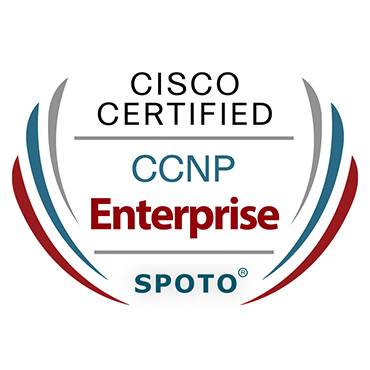
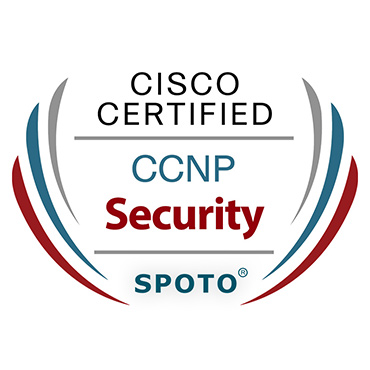

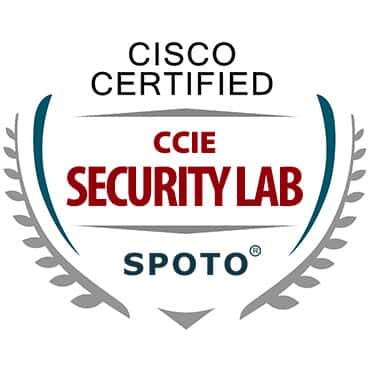
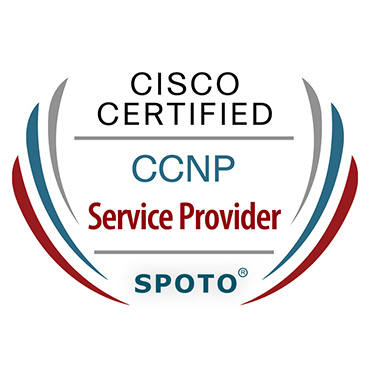

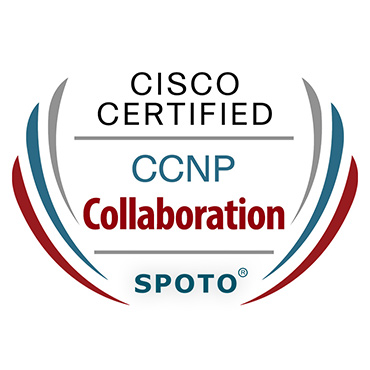
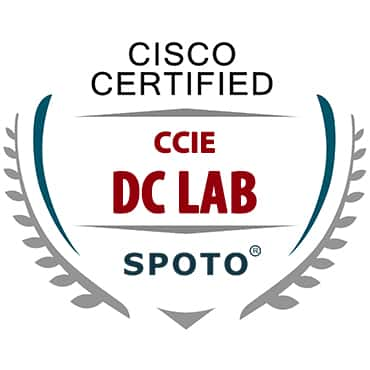


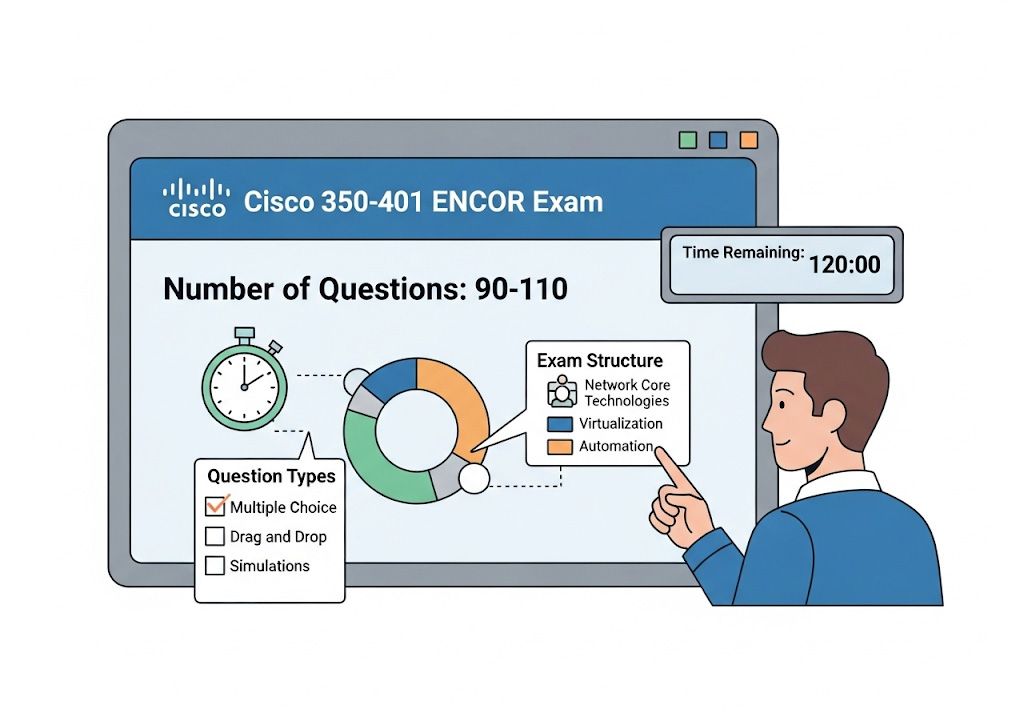
Comments